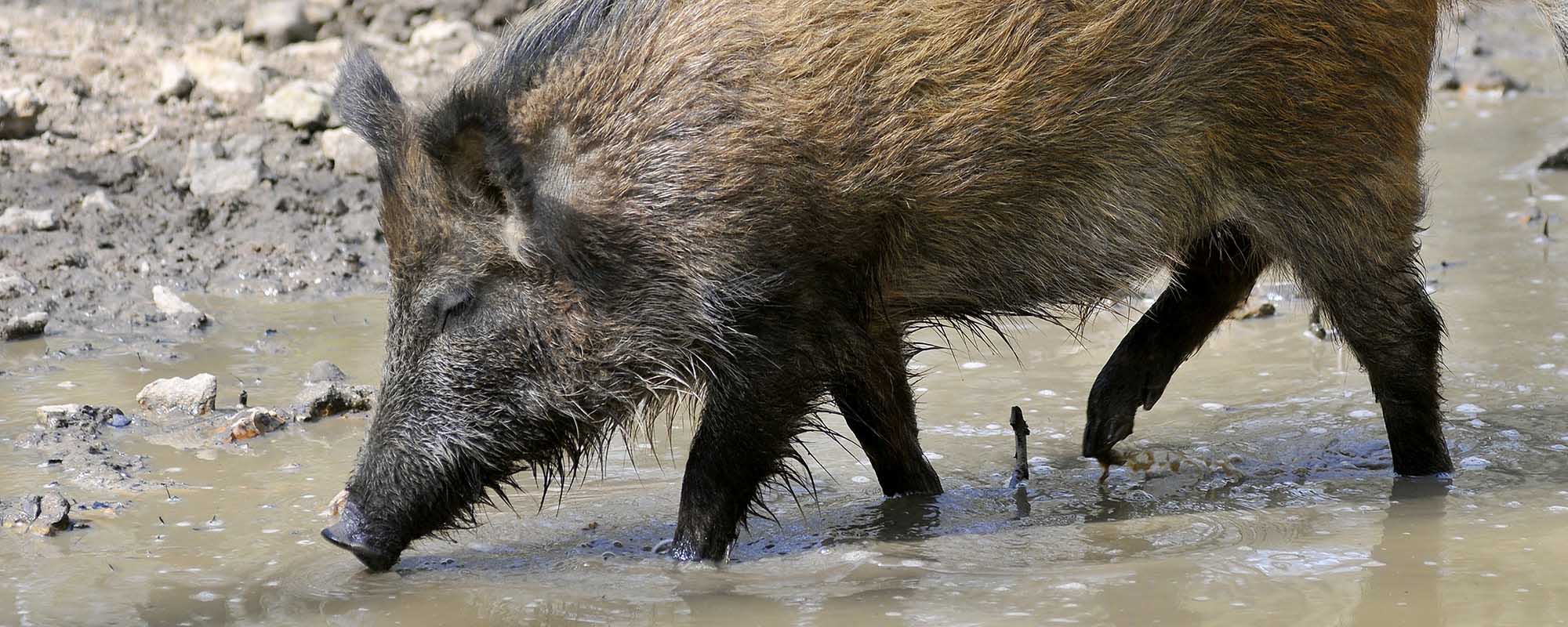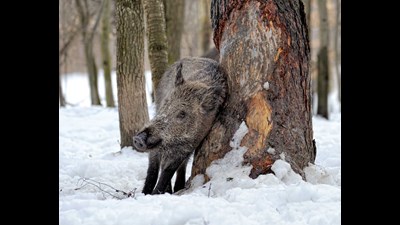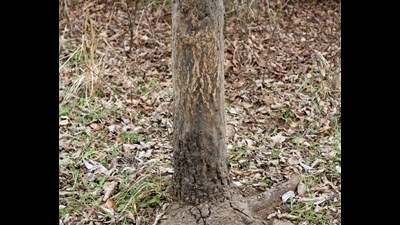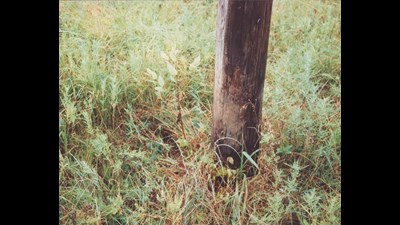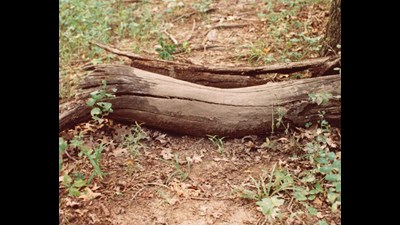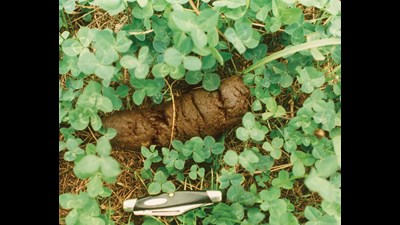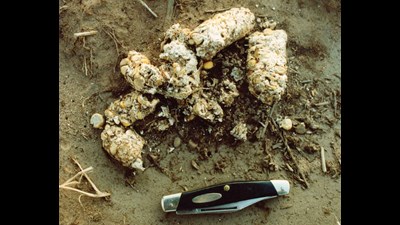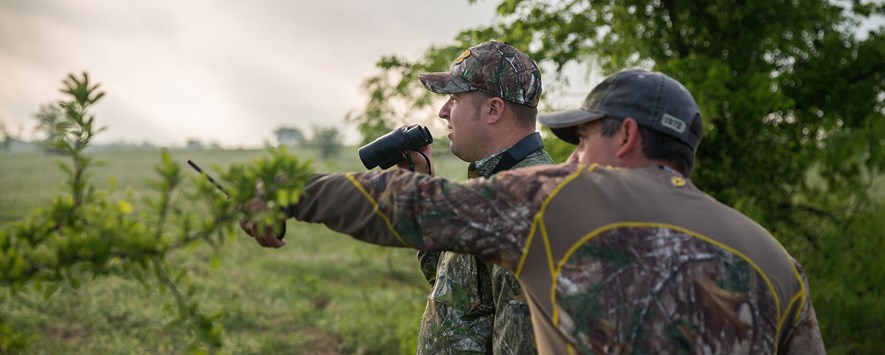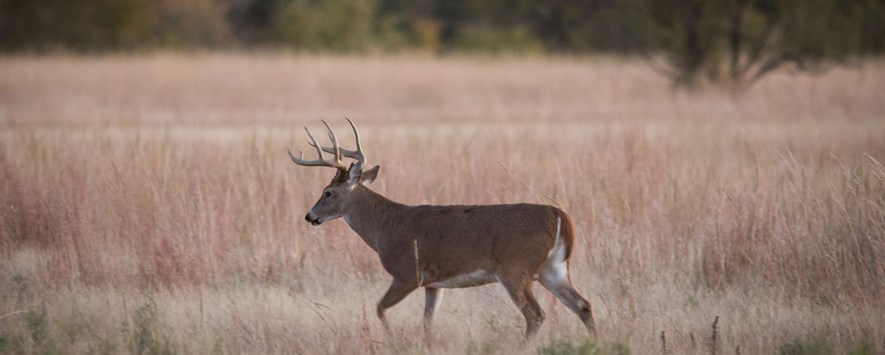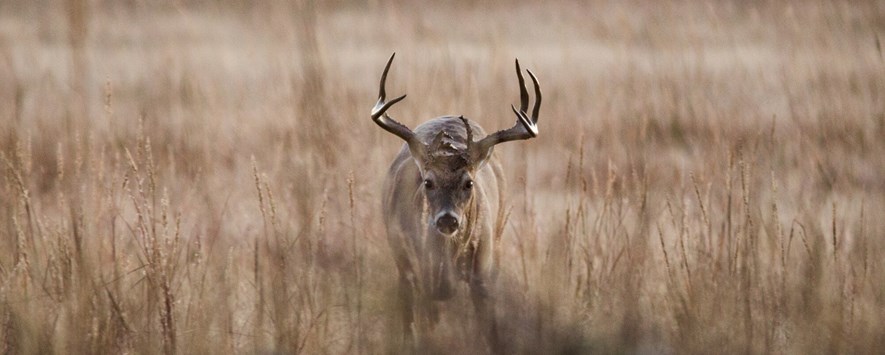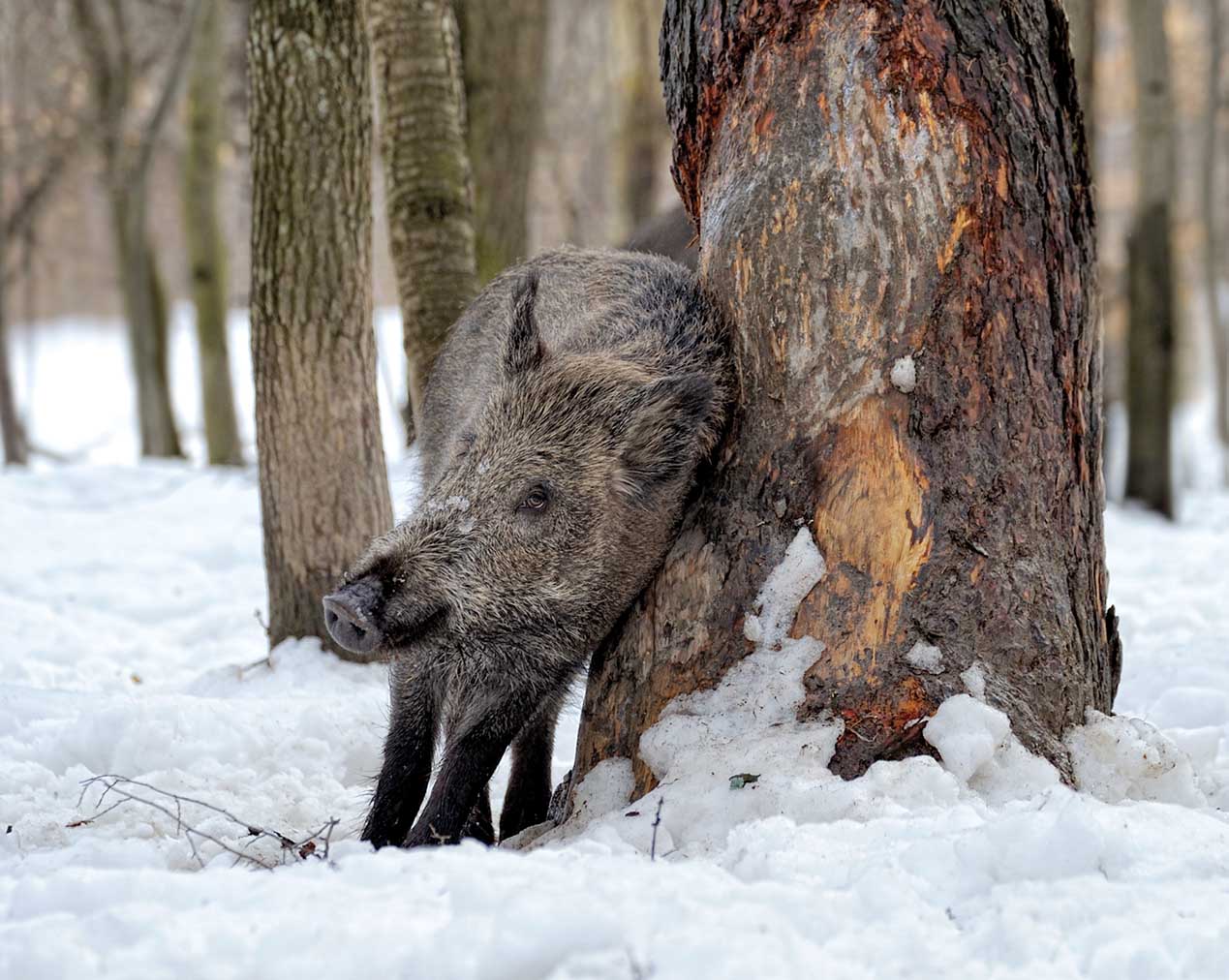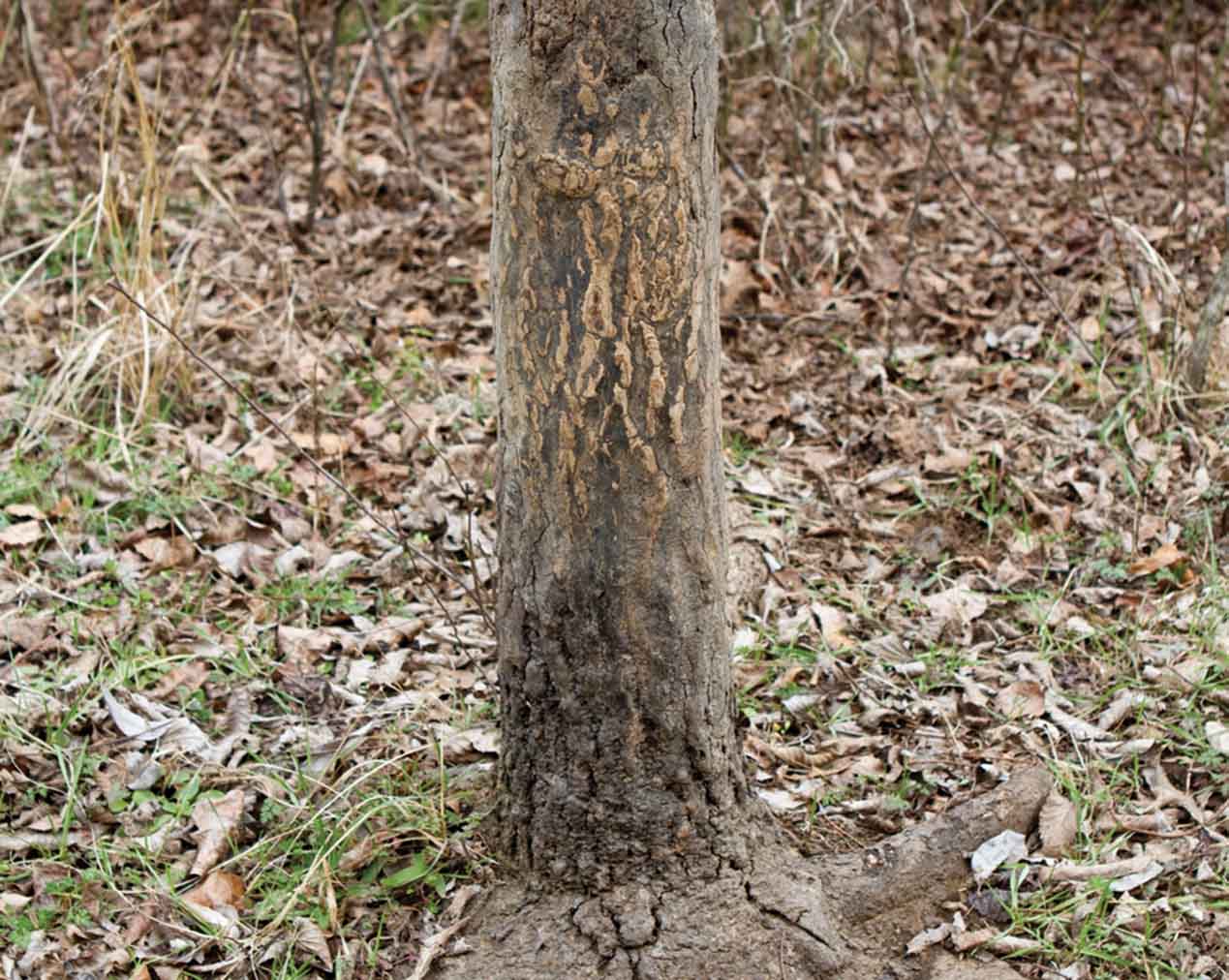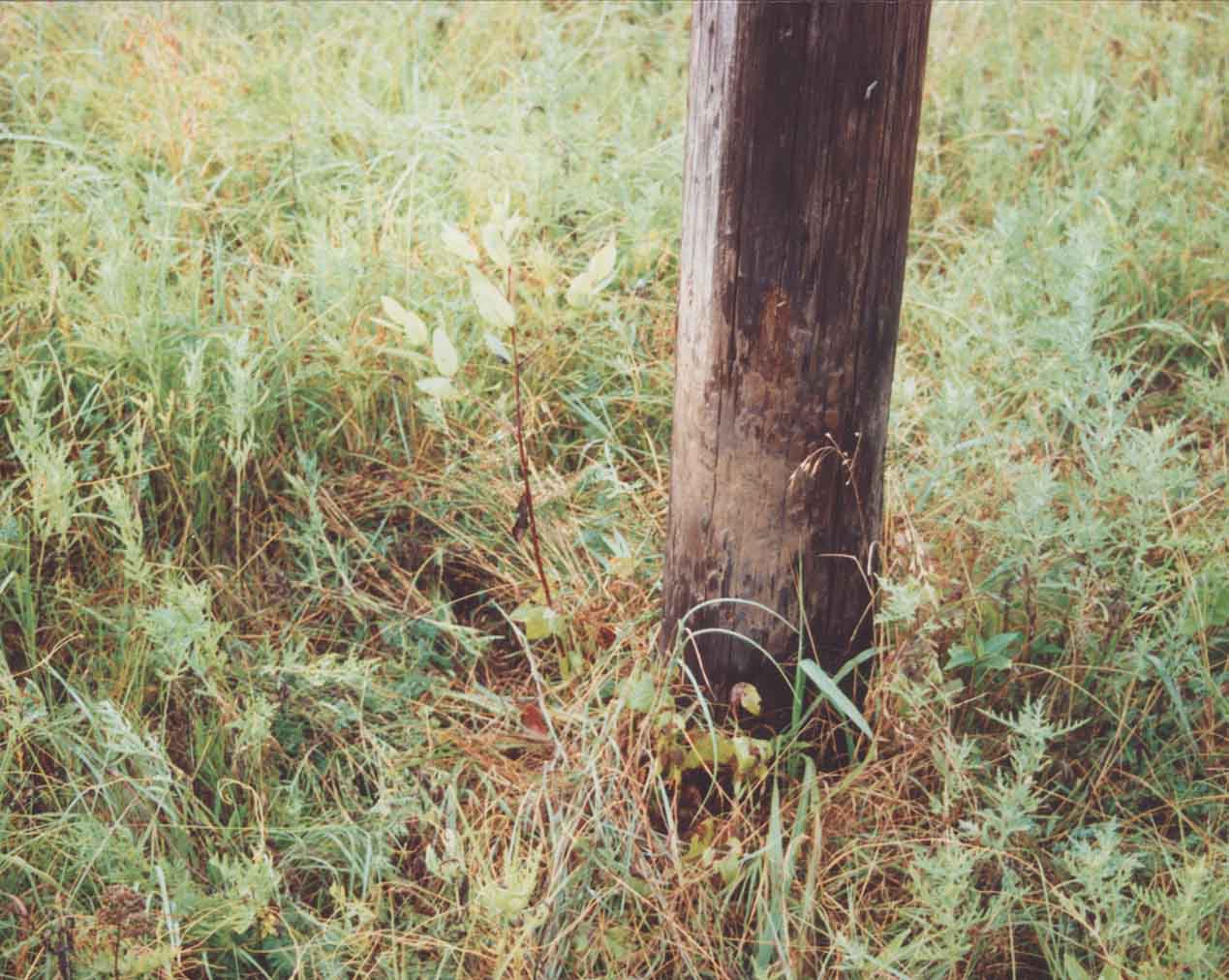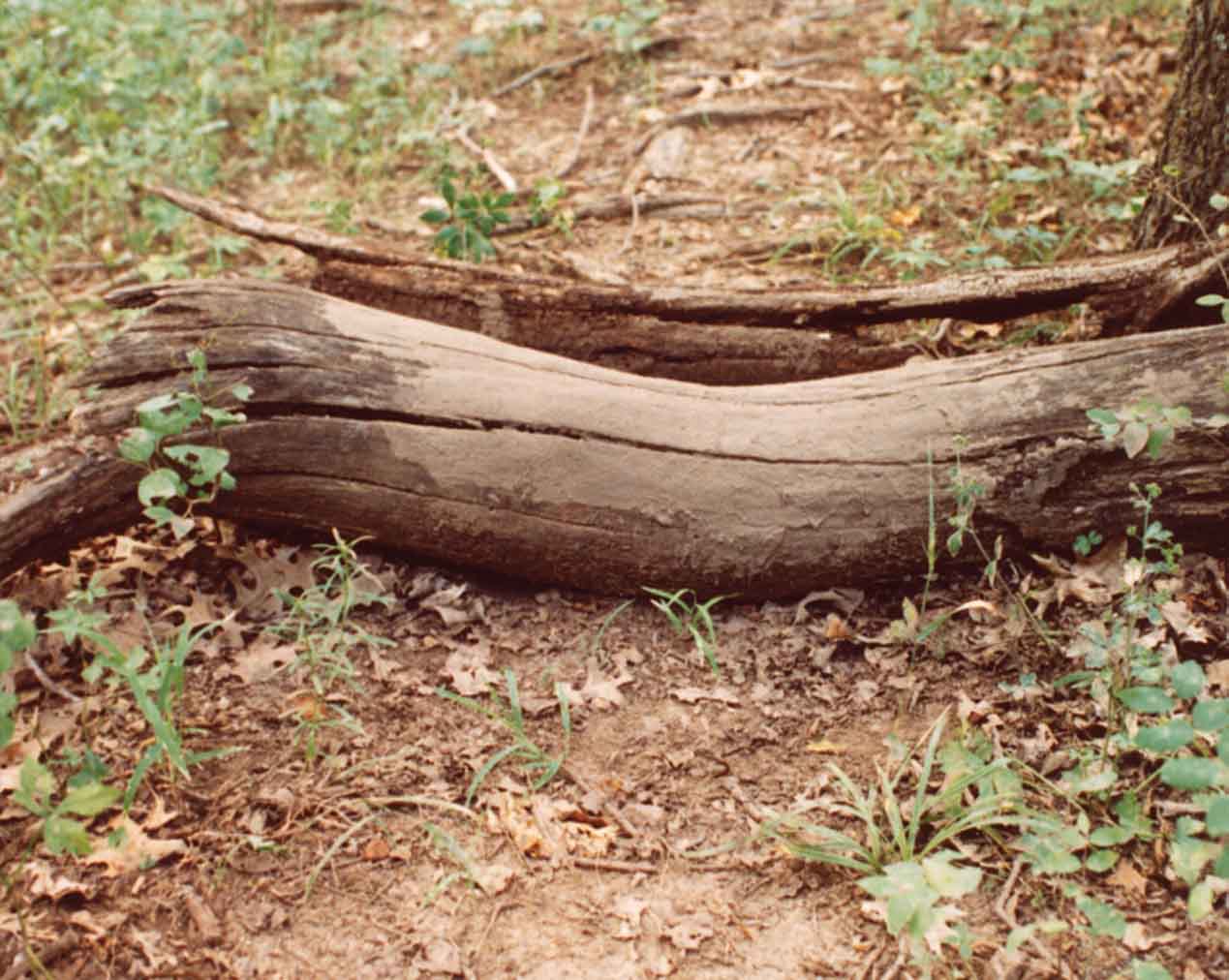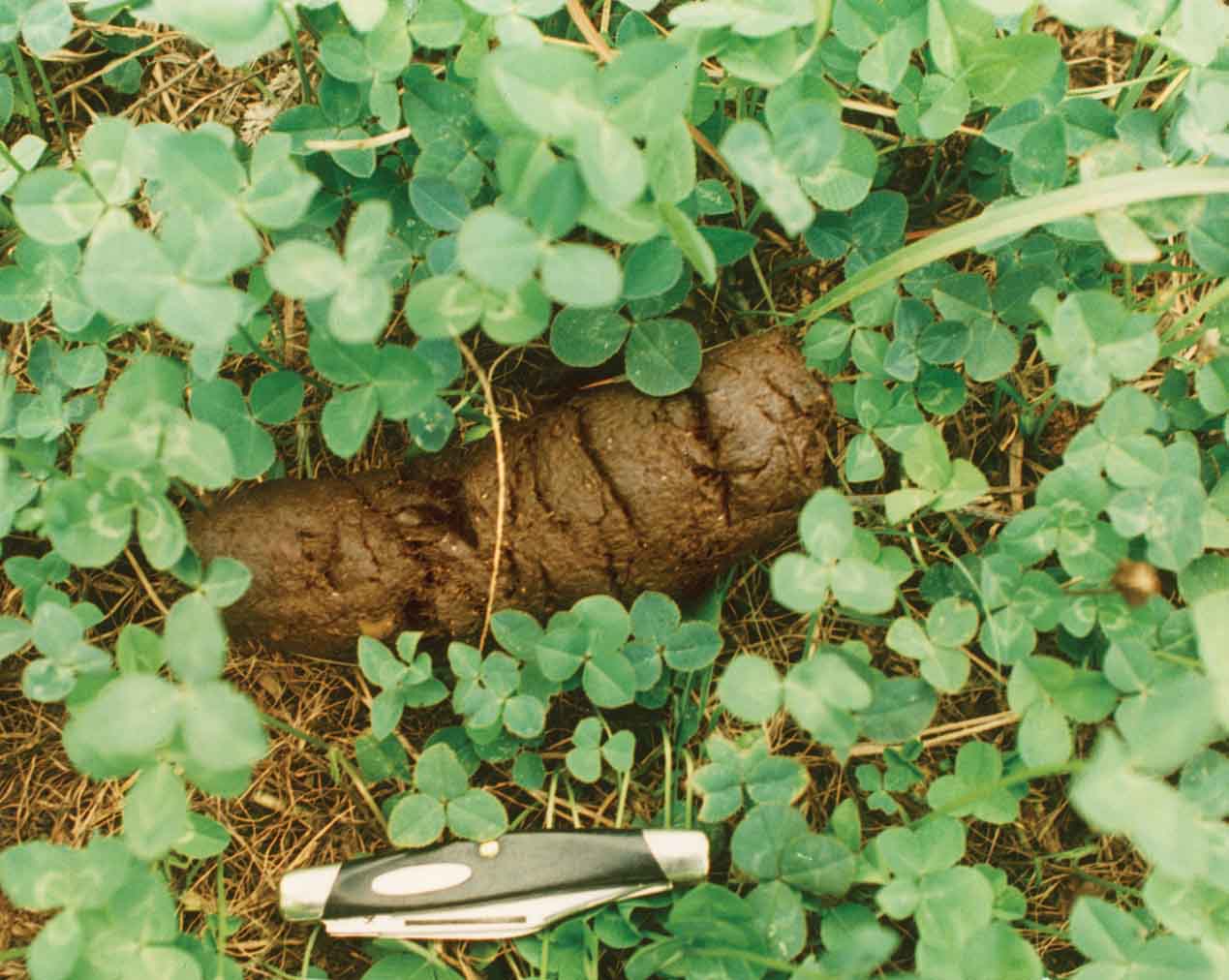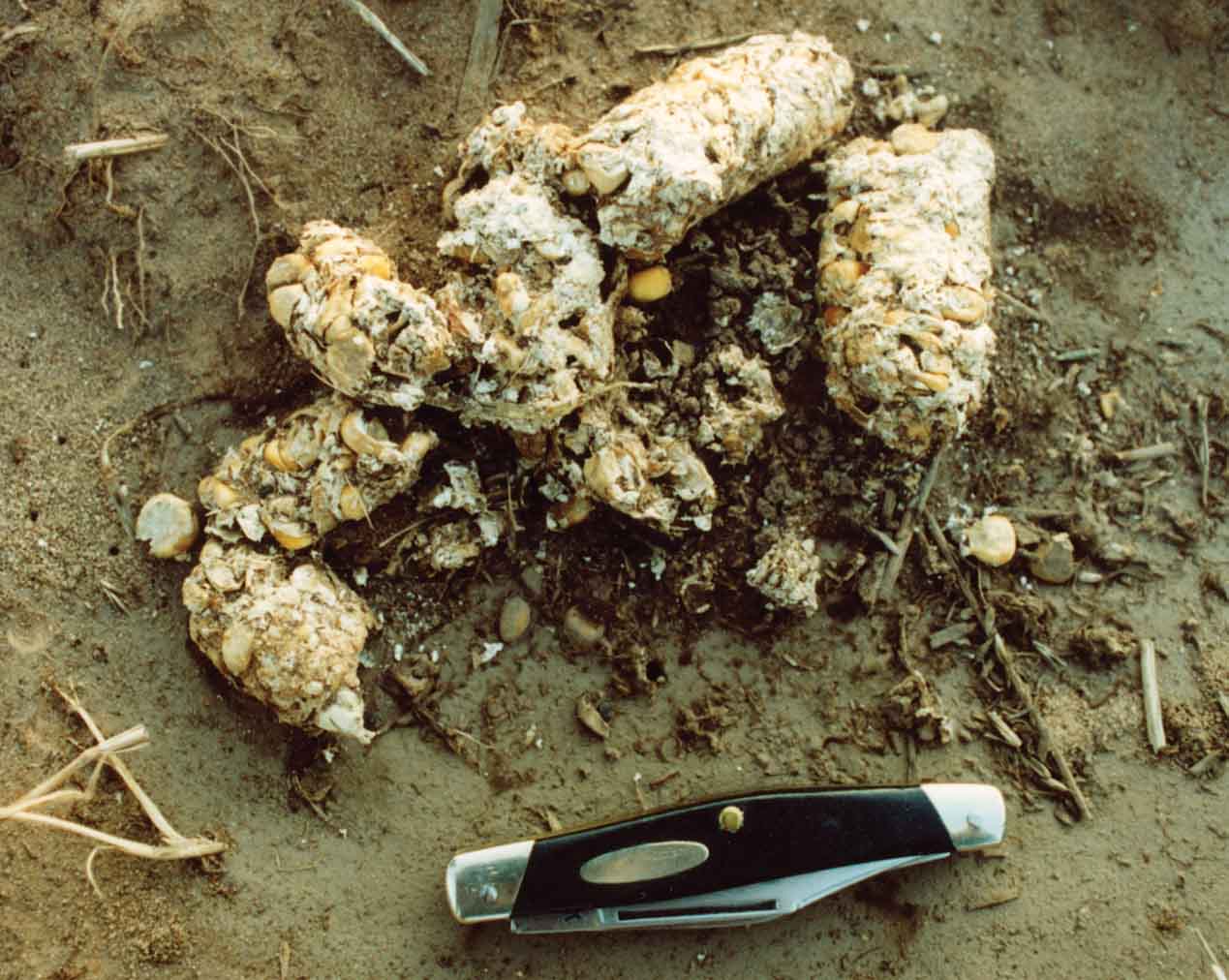Feral Hog Sign
There are several indicators that betray the presence of feral hogs in a given area. Some of these are easily recognized while others are not. Common signs include tracks, rooting, wallows, rubs and scat.
 Left: Tracks of a small feral hog. Right: Track of a white-tailed deer. Note the differences in the shape of the tracks. The hog track has a square shape while the deer track appears heart shaped. These tracks may look similar in the field, but with these general shapes in mind, they should be distinguishable.
Left: Tracks of a small feral hog. Right: Track of a white-tailed deer. Note the differences in the shape of the tracks. The hog track has a square shape while the deer track appears heart shaped. These tracks may look similar in the field, but with these general shapes in mind, they should be distinguishable.
Tracks are probably the most difficult to identify due to their resemblance to deer, goat and sheep tracks. The key point in distinguishing a hog track from a deer track is the rounded or blunt tip of the toes. The toes of a hog track on a firm surface tend to be more splayed than a deer track from a standing or walking deer. A hog track also appears rounded or square when compared to a deer track of similar width. Deer tracks made by standing or walking deer appear heart shaped and have more pointed or sharply tipped toes. The presence of dew claw marks with feral hog or white-tailed deer tracks is not an indicator of sex as commonly thought. Dew claw marks associated with any hog or deer track simply means the animal was running or stepping on a soft surface. The relative size of the track is the best indicator of sex or age of a hog or deer.
Rooting is a common activity and is done year-round in search of food. Depending on food source and availability, rooting can be more intense seasonally. Rooted areas can be very large, sometimes covering entire fields. In softer soils, rooting can reach a depth of 3 feet. This rooting habit is the prime reason for the feral hog's bad reputation with landowners. Rooting is easily recognized and can be beneficial or destructive to fields and vegetation (see Competition and Environmental Concerns), and can create the potential for damage to farm equipment and injuries to livestock.
Wallows are depressions in wet areas created by rolling and rooting, which enable hogs to coat their skin with mud. Wallows are created and used to escape heat and insects, and often fill with water, making them more effective for these uses. Wallows are used more frequently during hot summer months. Water sources can become contaminated from hog wallowing activities, and riparian habitat can be negatively altered. Wallowing can cause muddy water, excessive algae blooms, stream or pond bank erosion and reduced aquatic vegetation. All of these impacts can negatively affect water quality and may lead to decreased livestock use and reduced fish production.
Rubs are generally made after wallowing and are most often associated with wallows. The purpose of rubbing is for the hog to scratch and remove dried mud, hair and external parasites. Feral hogs use just about anything to rub on, including trees, fence posts, rocks and utility poles. Feral hogs seem to have a preference for rubbing on creosote-treated posts or utility poles. Rubs are most easily found during the summer and fall months.
Another indicator of feral hog presence is scat, a term for manure or droppings. Like tracks, feral hog scat is usually shorter-lived and is harder to identify or confirm than other signs indicating their presence. Feral hog scat can look similar to dog scat in shape, size and consistency; however, it can be variable.
